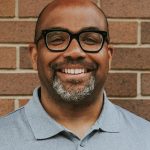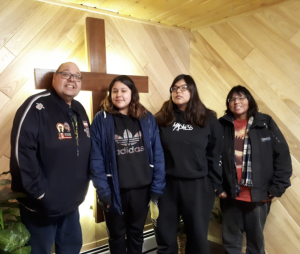 Jesus told his followers he came to bring an abundant life, a life that could be described by the fruit of the Spirit. This type of life is sorely needed for all of us, and yet historical circumstances make it challenging even today for Indigenous people.
Jesus told his followers he came to bring an abundant life, a life that could be described by the fruit of the Spirit. This type of life is sorely needed for all of us, and yet historical circumstances make it challenging even today for Indigenous people.
With this past Tuesday, June 21, marking National Indigenous People’s Day in Canada, I wanted to share the story of how God is using one member of the Indigenous community to bring healing. Parry Stelter recently spoke with me about his ministry and his passion to reach Indigenous people in Canada with the Gospel, to make attainable the abundant life in Christ.
But, he noted, it is a challenge. The Indigenous community has the highest rates of incarceration, child welfare, diabetes, suicide, addiction, and high school dropouts, among other statistics. Many Indigenous people have an identity crisis due to the past 500 years of systemic racism and abuse. Parry wants to highlight why the highest social ills across the board are associated with Indigenous peoples as a result of the wounding and intergenerational trauma inflicted on them by colonialism, but he doesn’t want to stop at highlight the why; he wants to administer healing.
Ultimately, he is hopeful because, he said, Indigenous people are spiritual, and thus he finds openings for the Gospel through their own spirituality. As they cry out to the Great Creator, he informs them the One they are crying out to is the Lord Jesus Christ himself.
Parry’s passion comes from his own life. His story is one of being subject to the intergenerational trauma of being Indigenous. He told me he is from the Sixties Scoop Generation, a generation of children whose biological parents were placed in the residential school system. Due to the wounding and abuse these parents suffered in these schools when they were young, they didn’t have strong parenting or family-building skills as adults, which led to their offspring being “scooped up” and placed in the foster care system.
Just after Parry was born, his mother was placed in a psych ward for postpartum depression, which is when he entered into the system; he was moved around to twelve different homes by the time he was two years old. At that time, by God’s providence, Parry ended up in the home of the Stelters, a Christian family who stuck with him and raised him in the faith.
Though not walking with Jesus as he grew up, Parry came back to the faith he was raised with and decided to enter into full-time vocational ministry. He founded Word of Hope Ministries, conducting workshops and teachings that seek to bring healing to the Indigenous community, as well as being a bridge between them and the non-Indigenous community. He is currently working on a dissertation that involves looking at Cree followers of Christ in the greater Edmonton area. He notices in them a cultural identity crisis and the need for a new, integrated model of Indigenous theology. Parry made it clear to me that all he does is an outpouring from Jesus and the Word of God.When asked what the way forward for the church is, Parry talked about the need for those in the Western church to listen to “the other.” He wants to facilitate this listening, so one of the practices he implements is a sharing circle at the end of his workshops. In this circle, there is no cross talk and no feedback, just sharing experiences. The person talking holds a feather or stick and no one else can speak; they say their piece and pass on the feather or stick. All who are not talking only listen, letting the words spoken live on their own merit. Parry wants to promote the development of opportunities to be better listeners, which will lead to better relationships in the body of Christ and healing among Christ followers.
Healing is needed in the Indigenous community, and brothers and sisters in Christ who are not Indigenous can help. Everyone is on their own personal journey of healing. One of the ways to help people heal is to acknowledge what has happened – recognizing the territory on which one is standing on when speaking. What also helps with healing and reconciliation is acknowledging the injustices experienced by Indigenous people, not just during the time of residential schools but over the past 500 years.
Even those who have trusted in Christ experience division; within the Indigenous Christian community, some have an “all or nothing” type faith, thinking their faith is compromised if they have not completely separated themselves from cultural practices. Parry noted an Indigenous man saying he didn’t want anything to do with what was traditional, pushing against Indigenous culture in any form. But Parry sees some non-spiritual practices that can create bridges for evangelism and discipleship without compromising the Gospel. Building bridges for contextualization can help draw Indigenous people to Jesus Christ.
Some refer to trying to convert someone as spiritual violence and to avoid being accused of this you need to avoid the Gospel, but Parry cannot and will not do that. For Parry, Jesus is the only Way, he is the Truth, and he is the Life. In him there is abundance, and Parry wants to be part of his Indigenous community experiencing this abundance.
Parry Stelter is a resident of Stony Plain, Alberta, and is the Indigenous Representative of the Cultural Roundtable. He’s a member of Alexander First Nation, which is part of Treaty Six Territory. He is actively involved in the local church, and he is a doctoral candidate in contextual leadership at Providence University. You can find out more about him at his website: www.wordofhopeministries.ca.
The header image is adapted from Last Supper by Dorothy Tchumut, an Australian indigenous artist.
